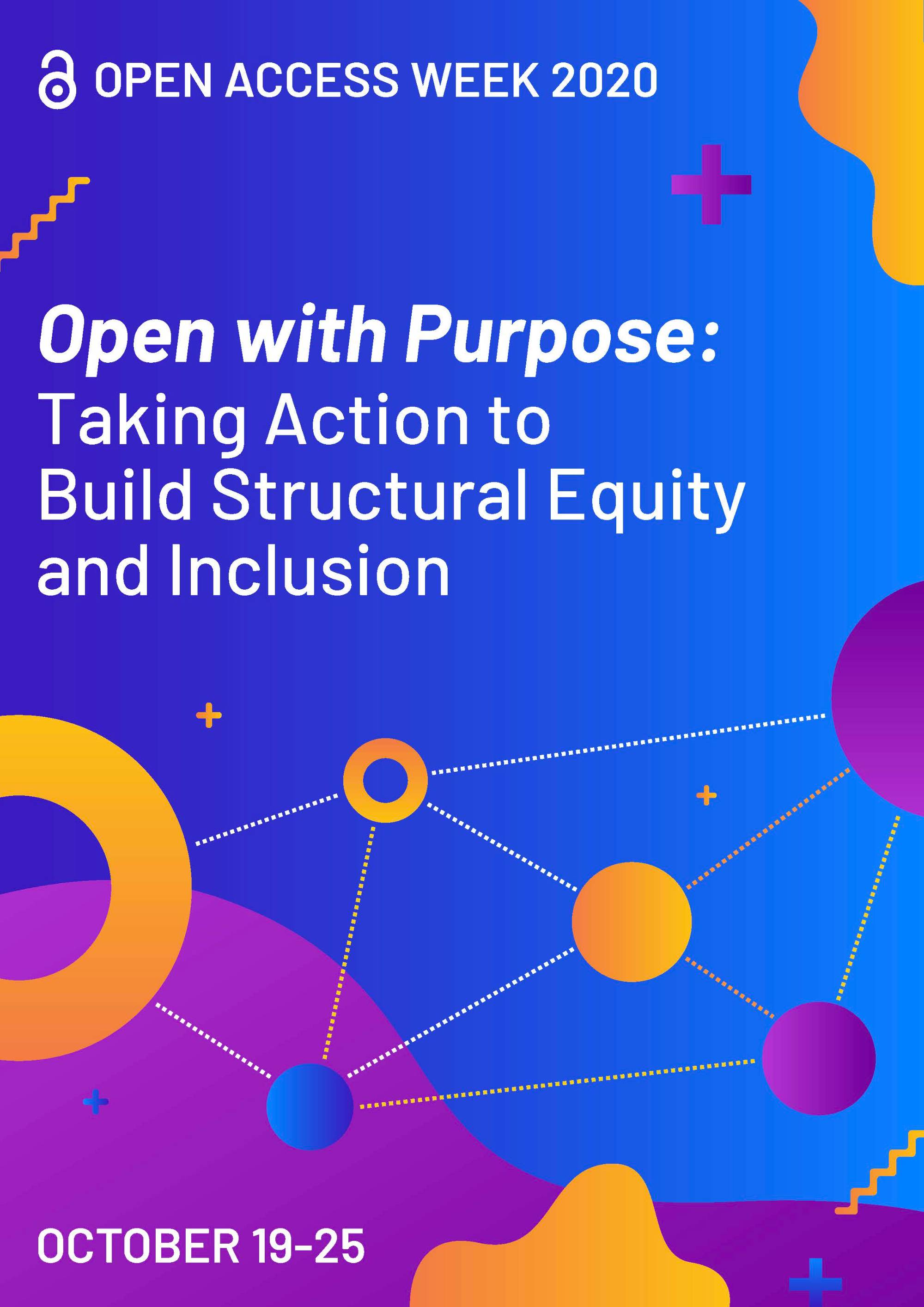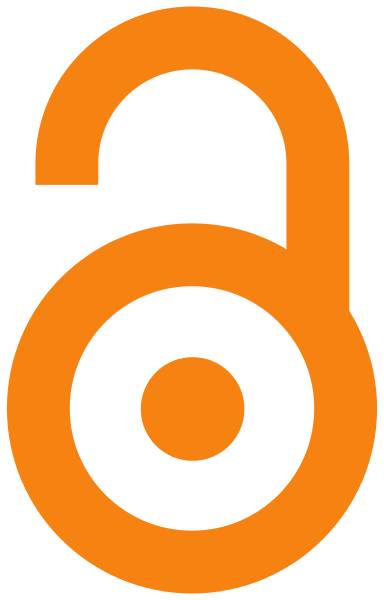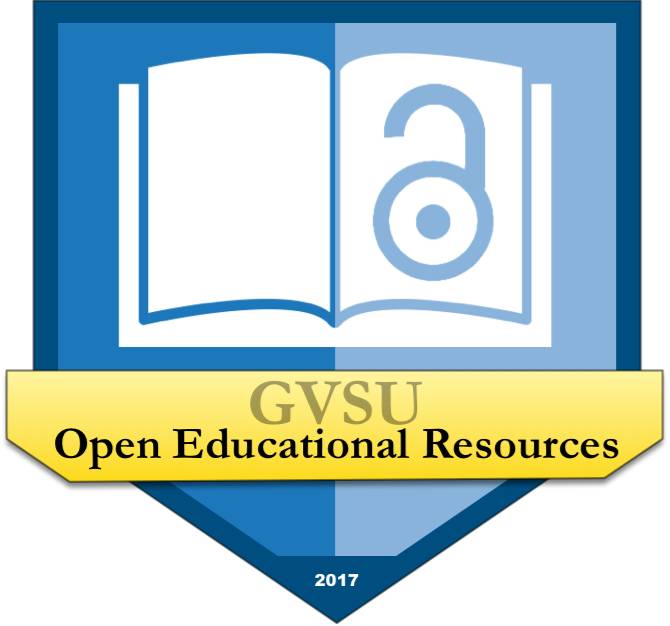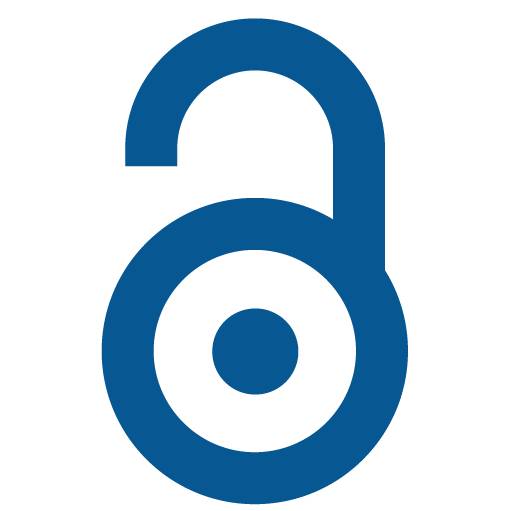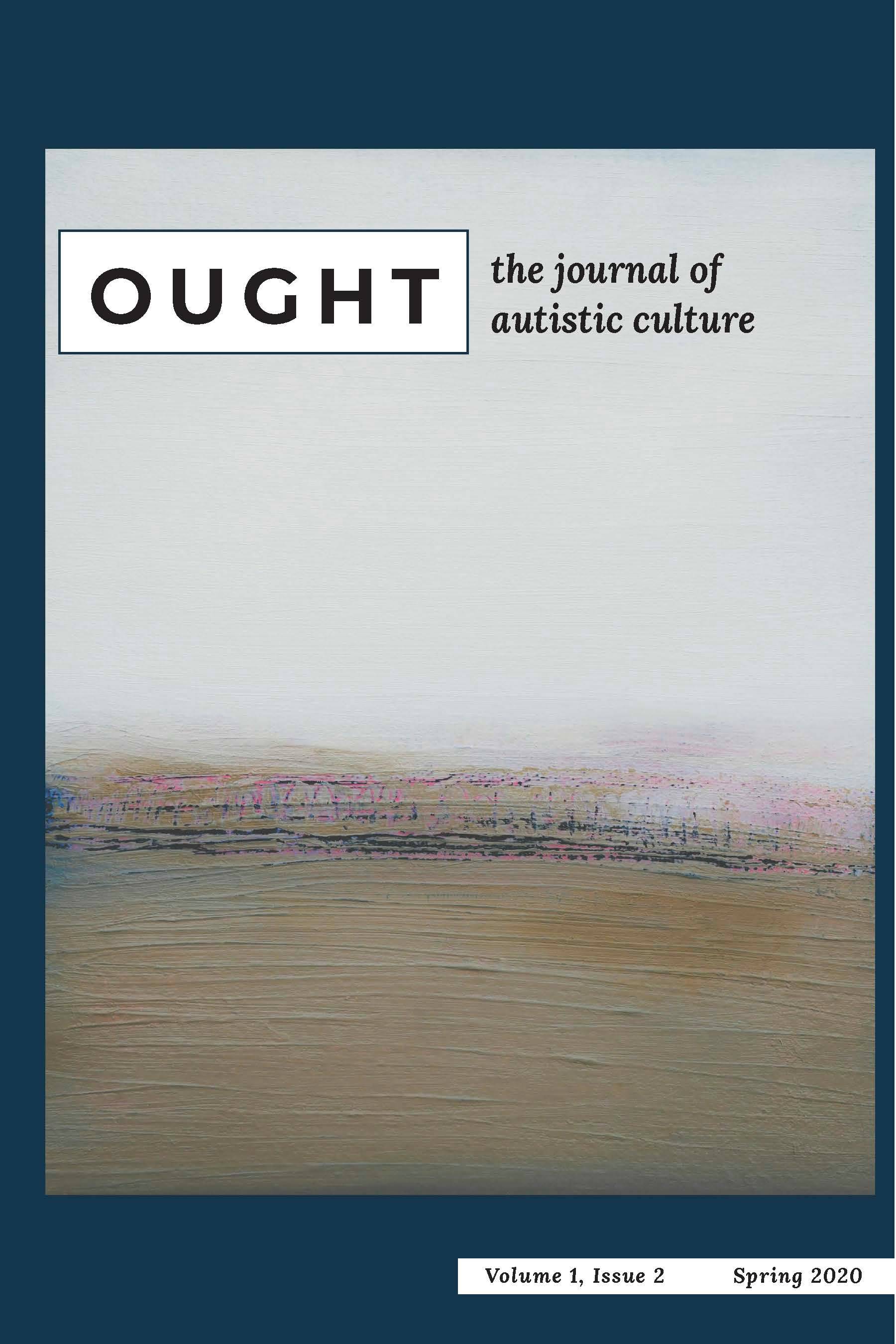Open with Purpose: Open Access Week 2020
Permanent link for Open With Purpose: Can scholars challenge global inequity by rethinking how we evaluate scholarly publications? on October 23, 2020
Yesterday, our Open Access Week blog post reflected on a growth area for the GVSU Libraries, an opportunity for us to do more to build an inclusive and equitable system of scholarly publishing. Today, we offer a similar reflection which applies to all scholars and our institutions, especially in the Global North. Unless we examine and change the ways we evaluate scholarly publications and the research of individual scholars, Open Access publishing will continue to exclude much of the world.
The rise of digital publishing and Open Access is an exciting opportunity for removing barriers to global participation: anyone can publish an Open Access journal, and scholars around the world can read or submit work to that journal. Yet this abundance can create uncertainty for scholars facing a vast and growing number of unfamiliar journals, a few of which are deceptive or exploit authors. In the same way that email is a fantastic communication tool but makes phishing and similar scams possible, some bad actors exploit Open Access publishing. Unfortunately, some of the academic community’s responses to the problem of unfamiliar or poor-quality journals have strengthened barriers to global participation in scholarship.
A common response is the use of watchlists to identify and avoid questionable publications, but these are inherently subjective, with a high risk of harm to journals outside the major commercial publishing world. When one of the earliest influential watchlists flagged a legitimate African publisher as “possibly predatory,” authors and editors began withdrawing. Despite appeals, the U.S.-based person who ran the list refused to unflag the publisher, severely harming their ability to share African scholarship with a global audience. This particular watchlist is gone, but its replacements carry similar flaws as highlighted in a recent research article.
Publishing efforts around the world can likewise be excluded when scholars and our communities judge the quality and value of research based on citation metrics like the Journal Impact Factor or indexing in commercial databases like SCOPUS. Our reliance on these tools as a sign of quality ignores the reality that they disproportionately center publishers and publications from North America and Western Europe. As the scholar and publishing leader Arriana Beccerril-Grande described in a 2019 keynote address at the Library Publishing Forum, this underrepresentation limits the reach of Global South scholarship and makes it easy for researchers to incorrectly view all unrepresented journals as low-quality or suspicious.
The good news is that scholars at GVSU and worldwide have the tools we need to start changing and challenging these biased systems. Instead of relying on watchlists to avoid problematic publications, use tools like Think Check Submit and the Libraries’ Journal Quality Indicators to guide a critical, informed review of a potential journal. Or consult with a liaison librarian; after all, evaluating information sources is a core professional skill for librarians! Meanwhile, when you and your colleagues are evaluating someone else’s research, consider the principles in the San Francisco Declaration on Research Assessment, which encourage assessing research on its own merits, not via flawed surrogates for quality. When we and our academic communities move away from these biased tools, we are dismantling barriers to support genuinely global participation in scholarly and creative practice.
Permanent link for Open With Purpose: Where are we working to improve accessibility in GVSU Open Access collections? on October 22, 2020
Open Access means more than “free”. Our earlier posts this week highlight successes, where Open Access and library publishing initiatives are working to reduce inequities and make the scholarly conversation more inclusive. Today, we’re reflecting on accessibility, an area where library publishers know we can do better, and discussing how we aim to improve here at GVSU.
Conversations about access to information, including Open Access conversations, often focus on paywalls and similar financial barriers, but these are not the only sources of inequity and exclusion in scholarly publishing. The (in)accessibility of digital information, specifically for screen readers and other assistive technologies, is a significant obstacle to a genuinely inclusive, equitable academic community. In an ideal scenario, assistive technologies can provide an audio version of an electronic journal article or book, making the content of that text available to someone with limited or impaired vision. However, this ideal is only possible when the characters in the text can be correctly identified by the assistive device, and when visual elements of a page or document are machine-readable. The former is increasingly easy to achieve automatically, but the latter requires human time and effort to implement, especially after a document is created. Allocating the resources to do this is a challenge for any organization, and frankly, we could be doing much better.
Accessibility is a major priority for GVSU, and both the university and the Libraries as a whole are continuing to improve accessibility of the university’s webpages, videos, and course content in Blackboard. But as with many other academic institutions and publishers, our library publishing and Open Access services have room to improve accessibility in the documents we publish. We’ve been thinking and talking about our accessibility challenges over the last few years, but have not made as much forward progress as we hoped.
Inspired by this year’s Open Access Week theme of building more inclusive and equitable publishing systems, we are publicly releasing a Roadmap to Improved Accessibility for our library publishing and Open Access content. Additionally, over the coming year we will be working to produce fully accessible versions of our GVSU-authored OER as part of a 1-year pilot of the PressbooksEDU publishing platform.
These actions represent a small step forward; we are not yet near the end of the beginning of our accessibility journey. And much of what we are able to do will depend on changes beyond our control, as Grand Valley and the state of Michigan continue to navigate the uncertainty of a global pandemic and (eventually) its aftermath. We can’t predict how far we’ll be able to go, but we can take a step forward, and that’s a start.
Permanent link for Open With Purpose: How do Open textbooks and OER remove barriers to learning? on October 21, 2020
The cost of textbooks is a persistent source of inequity. In 2019, two thirds of students polled by University Libraries and Student Senate reported skipping at least one required textbook due to the cost, a number matched in national surveys of undergraduates. Students often overcome the lack of required material by borrowing from a classmate or using a print copy from their library’s course reserves. Even though technology enables us to share more information at a lower cost than ever before, commercially-published digital textbooks can easily lead to more inequity, thanks to single-user access codes, time-limited digital rentals, and other barriers.
COVID-19 underlines one particular barrier: many of the largest textbook publishers refuse to sell digital textbooks to libraries for online course reserves or digital lending. Earlier this summer, the GVSU Libraries issued a Statement on Textbooks in the Library Collection, based on one by librarians at the University of Guelph, which points out that this barrier impacts all of higher education. Commercial publishers like Pearson, Cengage, and McGraw-Hill, among others, have the technology and resources to enable affordable, flexible access to course materials, but they choose not to do so.
Open Access course materials and Open Educational Resources (OER) offer an alternative, one which takes advantage of technology to lower the financial barriers to knowledge instead of raising them. OER, like the GVSU-authored textbooks and teaching tools published through the GVSU Libraries, are free to read, download, and share, and include permissions allowing educators and students to modify, improve, and customize the materials. OER can be printed and many are available for purchase as traditional print textbooks, but they’re also available to anyone with an internet connection and computer or smartphone. Additionally, OER provide a path to publishing for works that commercial publishers aren’t interested in, like Emeritus Professor of Mathematics Ted Sundstrom’s Mathematical Reasoning: Writing and Proof. When the original publisher decided it was no longer profitable, Sundstrom negotiated to get his copyright back, and republished the textbook as an OER. Since then, the “no longer profitable” book has been downloaded nearly 200,000 times, and is used in mathematics programs across the U.S.
We have the technology to make educational materials more equitable, affordable, and sustainable. Don’t let the commercial textbook market use technology to make an already-inequitable system worse. Talk to a librarian to explore OER today!
Permanent link for Open With Purpose: How can Open Access empower students to share their scholarly work? on October 20, 2020
Students are scholars. The journey from consumer to creator of new academic information is a core part of higher education, especially at universities like Grand Valley. Every semester, Lakers run experiments, analyze topics from new perspectives, collaborate to tackle community challenges, and thoughtfully explore important social issues.
The collections of student work in ScholarWorks@GVSU, Grand Valley’s Open Access repository, highlight the wide variety of Lakers’ scholarly works. Many students in the Frederick Meijer Honors College choose to share their final Honors projects, like a Laker Survival Guide aimed at first-generation GVSU students or an artistic exploration of how nurses are portrayed in popular culture. Meanwhile, Lakers’ graduate theses, including a study on Swearing in a Second Language and timely work on Students’ Motivations and Barriers to Online Education, have been downloaded nearly 1.5 million times by readers in almost every country on Earth.
Unfortunately, the subscription model of scholarly publishing offers relatively few pathways for students to share this work. Because paywalled journals must compete for limited subscription revenue, they’re more likely to focus on the most potentially-exciting research, on work from established scholars, and on traditional types of research articles. Even when student-authored works are published in subscription journals, the audience is limited to people whose institutions subscribe to those journals—and with budget cuts at almost every university, no one can afford to subscribe to everything. The alternative is paying for each article individually, often at $30 or more.
ScholarWorks@GVSU is a publishing model which can amplify student voices that might otherwise be excluded. Student work shared here can be limited to the GVSU community or made available to readers around the world—and readers around the world are often very interested in Lakers’ innovative ideas, critical analysis, and original research.
This summer, for example, we recorded over 34,000 downloads of a 2014 opinion editorial in ScholarWorks@GVSU, as U.S. protests against racial injustice and police brutality led many to echo the student author’s question, Why is it that so Many White People Fear Black Men? U.S. readers account for about two thirds of these, with May – September 2020 seeing more international downloads than the total recorded over six years since the editorial first appeared online in College Student Affairs Leadership, a student and faculty publication from GVSU’s College of Education, currently on hiatus.
In the traditional, paywalled system of scholarly publishing, most of these works would remain silent, largely unread except by the student authors and their professors. Through Open Access, Lakers’ hard work, insights, and voices can reach interested readers around the world.
Permanent link for Open With Purpose: How can Open Access publishing enable more inclusive scholarly conversations? on October 19, 2020
Hello on this first day of Open Access Week – Open with Purpose: Taking Action to Build Structural Equity and Inclusion. Each day this week we will be profiling open access collections and library publishing services here at Grand Valley State University, focusing on how they foster equity and inclusion. Our first profile is one of our newer open access journals, Ought. The editor of the journal, Robert Rozema, describes the journal’s mission and why OA is so important to its success.
“Ought: The Journal of Autistic Culture focuses on autistic culture, aiming to document autistic culture by publishing scholarly and creative works that examine and explore it. As such Ought is ideally suited for an open-access platform. To begin, Ought wants to reach both academic and non-academic audiences—and this includes autistic and neurotypicals, professors and teachers, poets and painters, and people who are interested in autism and autistic culture. The journal also blends popular and scholarly genres, including visual artwork, videos and animations, and other genres/mediums ideally suited for digital, open-access delivery. In the upcoming issue (Fall 2020), the journal will publish a scholarly analysis of the work of Gary Numan, an autistic musician who composed influential electronic music, some of which will be included in the EPUB version of the article. The same issue will also feature a short film by a non-verbal autistic teenager and visual work by a frequent contributor The Art of Autism.
Because these works will be readily available—and not sealed off in an expensive database—they will be accessed by a much wider range of readers/listeners/viewers. Open access also means that the journal can integrate readily with social media platforms, increasing traffic and readership to the journal. My recent article on autistic superheroes, for example, was mentioned on Twitter and has received nearly 500 downloads to date, far more attention than my usual scholarly articles would garner. Open access makes all of this possible.”
Read more from Ought on their website.

